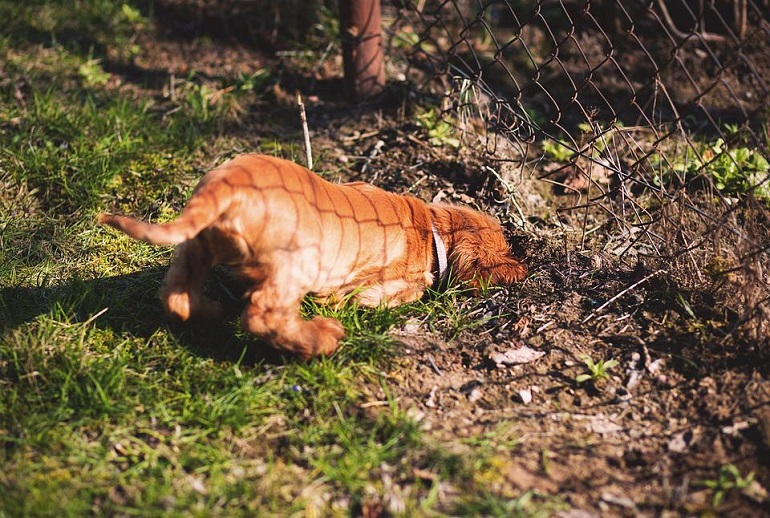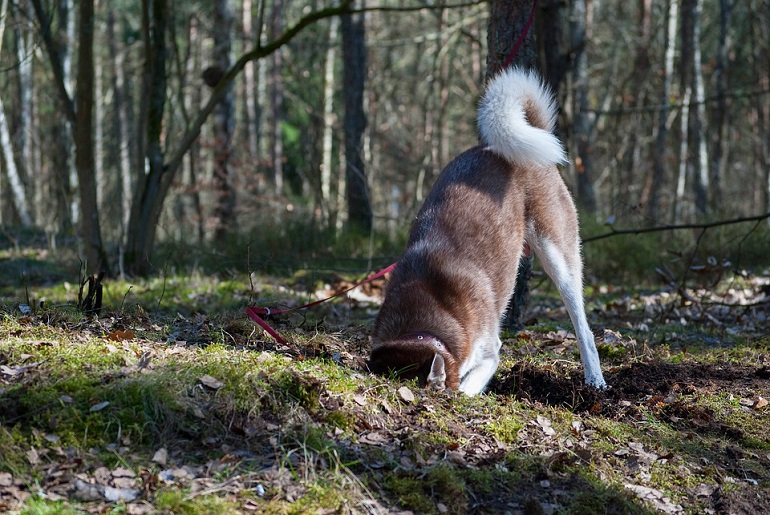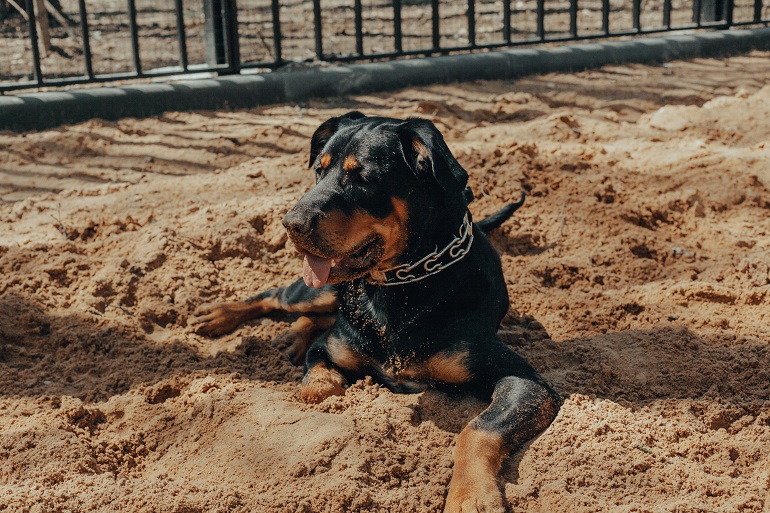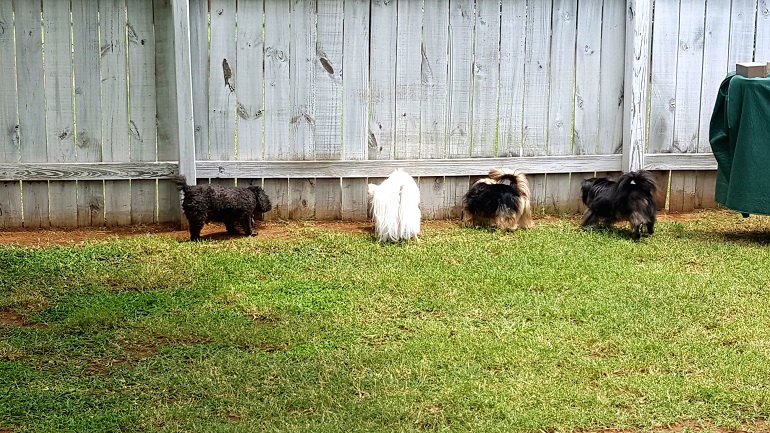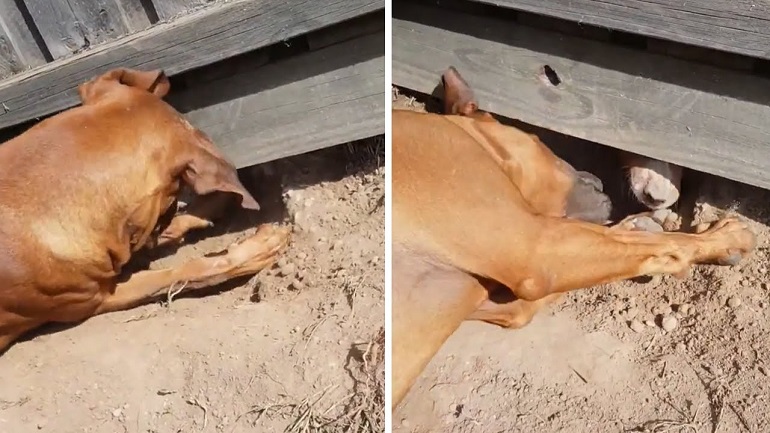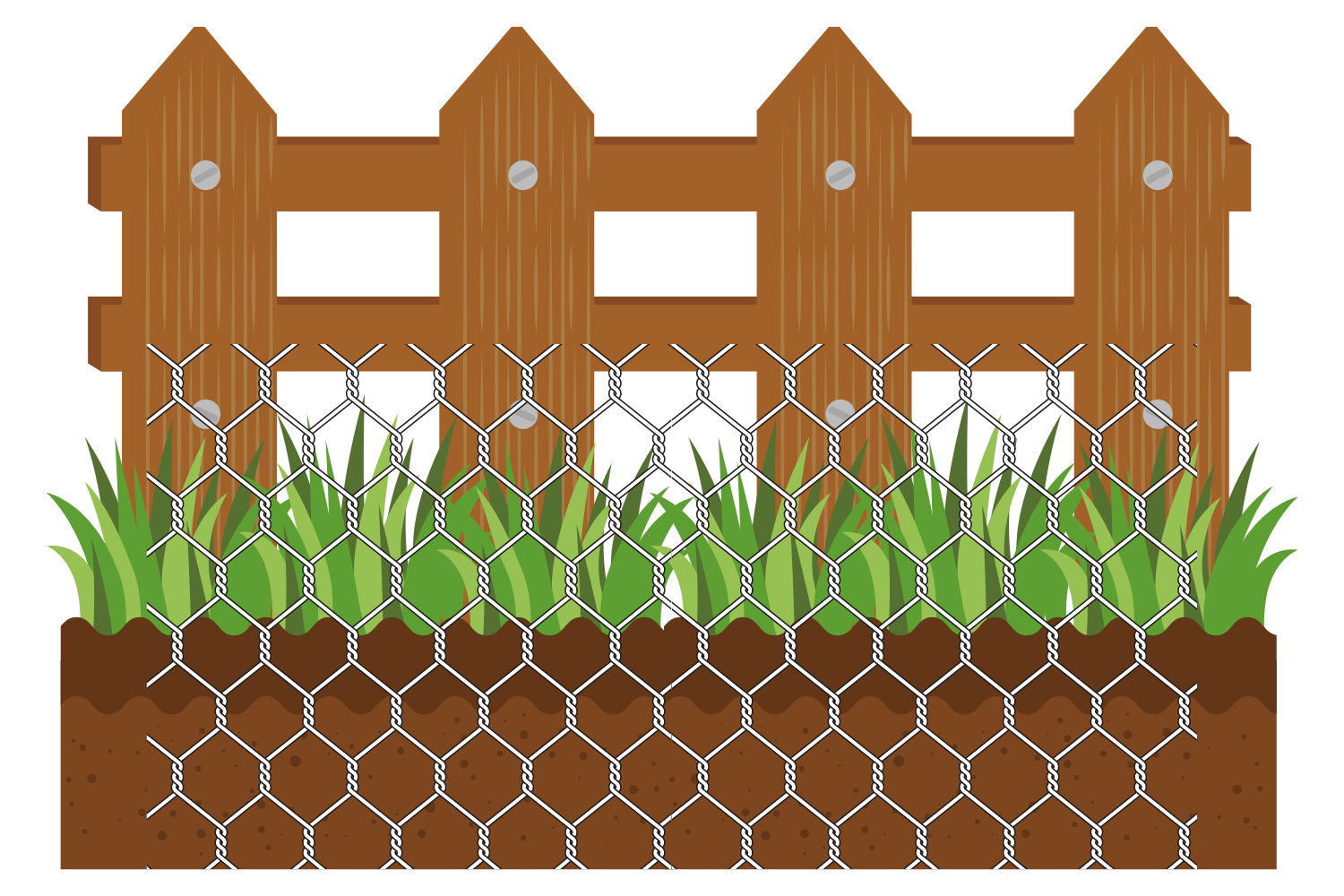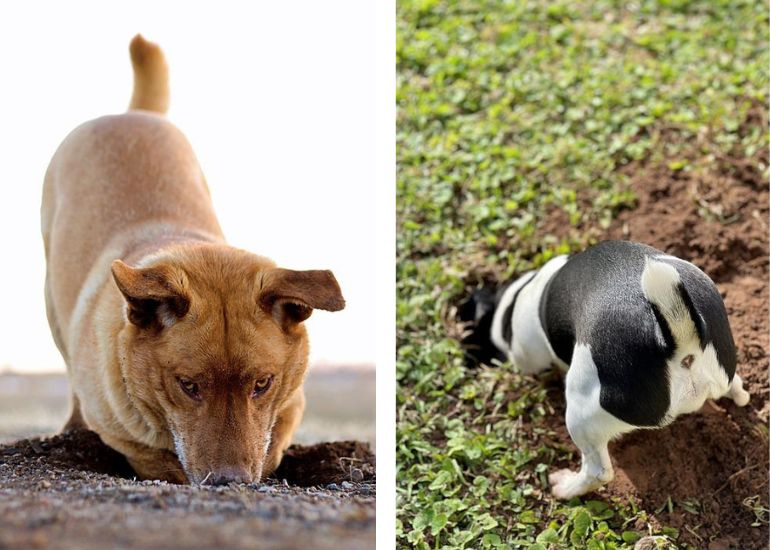Is your furry friend turning your backyard into a dig site, tirelessly burrowing under the fence in pursuit of adventure or escape? Worry not; you’re not alone in this challenge. Dogs dig for various reasons, from boredom to instinctual behavior, but the good news is that you can curb this behavior with the right strategies. In this guide, we’ll explore effective methods to prevent your dog from digging under the fence, ensuring their safety and preserving your garden’s sanctity. Embrace these practical solutions to keep your dog happily contained within your yard.
My cockapoo pup is a digger. In fact, when my in-laws got a collie puppy, we caught Mozzie (pronounced like Ozzy with an M in front) teaching the new puppy how to dig!
I looked out of the kitchen window and saw Mozzie digging a hole in our yard. Then he backed up so that the new puppy could take a look at the hole and give it a try herself. It was hilarious, adorable, and also not great — all at the same time!
There are a lot of reasons why dogs dig holes. Having holes all over your yard is quite an eyesore, but if your dog is digging under the fence, that’s a bigger problem that could endanger your furry friend as well as other dogs in the area.
To stop your dog from digging under the fence, there are a variety of solutions you can try, but step one is to figure out why your dog is digging in the first place. This will help you choose the best solution so that you don’t waste time, money, or energy on the wrong type of solution for your unique situation.
Why Is Your Dog Digging under the Fence?
There are four main reasons why dogs may be digging.
1. Boredom
If your dog spends a lot of time alone outside, it may simply be digging out of boredom. Digging can be a way for dogs to entertain themselves.
If this is the reason why your dog is digging, they likely need more enrichment (including physical and mental stimulation) and quality time with you.
You can look for ways to make your yard a more interesting place, like rotating in interesting toys for them to play with. A stuffed Kong or puzzle toy can keep dogs busy for a while. Just be sure that you don’t leave them alone with a toy that could get broken and the pieces swallowed.
Also, be sure that your dog is getting enough mental stimulation. The Humane Society of the United States recommends teaching your new commands (either on your own or through classes with a dog trainer) and then practicing these commands for a few minutes, multiple times per day.
My dog Mozzie definitely gets destructive if he doesn’t have enough mental stimulation. He loves practicing games that we learned from our dog trainer. It tires him out every time!
2. Natural Diggers
Some dog breeds have a natural instinct to dig. Terriers, beagles, and dachshunds are especially known for their desire to dig holes. They might be digging a burrow or trying to bury food or toys.
My cockapoo used to bury his favorite bones for safe keeping when he wasn’t chewing on them. He knew the precise location of every bone and would go back and dig them up when he wanted to munch.
Some larger dog breeds like huskies or labs will dig holes to get to the cool dirt underneath so that they can lounge in more comfort. If this is the case, your dog could benefit from a cooling dog bed outdoors or more time indoors out of the heat.
Natural diggers may not be intentionally trying to dig under the fence line to escape, but if they happen to be digging near fences, it will just happen.
Along with using some of the solutions below to keep your dog from digging out, you may want to provide these pups with a safe place to indulge in their instinctive behavior to dig.
3. Hunting Breeds
If your dog is digging near the roots of trees or shrubs, this could be a sign that they are hunting for burrowing animals or insects.
Terriers and dachshunds are underground hunters and they can be very determined.
Check your yard for signs of burrowing animals, like gophers or woodchucks as your hunter is probably trying to handle the situation. These kinds of pests are common in gardens, so be sure to check your garden or look into a solution for keeping your dog out of the garden area.
If you look into ways to get rid of underground pests to stop your dog from digging holes near the fence, be sure that whatever you use isn’t toxic for your furry friend.
4. Escape Artists
Lastly, we have the escape artist. Some dogs just want to get out and explore. This doesn’t mean that they are not happy at home.
If you have “intact” male dogs, they could go searching the neighborhood for a mate.
A nervous dog could be trying to get away from something, like a loud noise.
Separation anxiety sometimes goes along with this. If you leave your dog outside for long periods of time, they might start to panic and try to dig out to find you or someone else.
For escape artist pups, you’ll likely need to modify your dog fence or landscaping to help with containment. Working with a trainer on behavior modification can be a huge help as well.
Solutions to Control Dog Digging Behavior?
Now that you have an idea of why your dog is digging out of their backyard, it’s time to look at some solutions. Improving your fence is not the only option!
Fill Any Current Holes to Minimize Future Digging
As you fill any holes currently in your yard, you can “future-proof” them from your dog’s digging. Bury flat rocks and then cover them with loose soil before replanting grass seed.
If your dog decides to dig in the same place in the future, they’ll hit the stone just below the surface and have to stop.
Give Your Dog A Place Where He Can Dig
If your dog likes to dig for fun or because they have hunting instincts, give them their own digging area in the backyard where they are allowed to dig.
Make sure this area is nowhere near the fence line so that they don’t accidentally dig out. Create a boundary with some sort of stone or wooden edging so that the space is clearly defined. You may want to add loose soil or sand to this area. Some people even just use a child’s sandbox for this.
Make the digging zone extra attractive by burying toys or treats for your pet to find.
You will need to spend time training your dog that digging in the “digging pit” is a good thing and digging outside of the digging pit is a bad thing.
When your dog digs in their designated zone, give them lots of praise. When your dog digs near the fence or anywhere else, give them a firm “no digging” command and redirect their attention.
Provide Your Dog with Enough Exercise
If you suspect that your dog’s digging behavior is coming from boredom, giving them more physical exercise is the place to start.
Most dogs require at least one walk per day. Higher energy pets need a whole lot more.
Before you leave your dog out in the yard, tire them out with a run or by playing with toys that provide exercise, like throwing a frisbee. A tired dog is generally not a destructive dog.
Spend Plenty of Time With Your Dog
The American Kennel Club recommends that “A dog should spend no more than 6-8 hours alone during the day without a dog walker or dog daycare”.
Leaving your dog outside alone for extended periods of time can lead to separation anxiety and boredom. So go hang out with your fabulous pooch to help with their digging behavior!
You can play fetch or tug of war, play “treat hide-and-seek”, or even do some at-home agility training!
If you take your dog through a dog training course, they’ll likely provide you with training games that you can play with your dog. These provide good bonding and mental stimulation for your puppies, lowering the chances that they will dig.
Positive Reinforcement
Train your dog to stay away from the fence line using positive reinforcement. This means ignoring your dog’s attention-seeking negative behavior and praising their good behavior.
Working with a dog trainer can help immensely with getting started. We had a trainer come to our house once so that they could see what our yard looked like and suggest specific training ideas based on exactly what was going on. We learned a lot about how to train our dogs from the experience.
Strengthen Your Fencing
Chicken Wire L-footers
You don’t necessarily need to get a new fence to change your dog’s behavior. You can modify your existing fence to stop digging. One way to do this is to create an “L footer” with chicken wire.
Basically, you attach the top half of the chicken wire to the bottom of your fence interior and then fold the wire inward and bury the bottom half of the chicken wire in your yard.
This way, if your dog decides to dig near the fence, they’ll hit the chicken wire and be prevented from escape. Just be sure the fold back the jagged edge of the chicken wire so that your dog doesn’t scratch his paws on it.
Screening a Chain Link Fence
If you currently have some sort of see-through fencing, like a chain link fence, you can use a bamboo or fabric screen to cover the chain link fence.
If your dog is digging because they see things that they want to get to outside of the yard, this will prevent them from being able to see through the fence.
Fence “Baseboards”
Another way to reinforce your fence is to dig a mini trench and partially bury some lumber along your fence. This can be especially helpful if there is currently a gap between the bottom of your fence and the ground.
Landscaping
To stop your dog’s digging, you can also add rocks to your landscaping near fences. Many dog owners have success by partially burying large rocks along their fences. Since your dog can’t dig through the rocks and they are too heavy for your dog to move, it’s a pretty solid solution.
Another option is to bury chicken wire in the ground near your fence. This doesn’t change the look of your yard but will stop a dog from digging under the fence. Just be sure that when you bury chicken wire that the pointy ends are folded under.
Wireless Fencing
One final solution is to use wireless fences to keep your pooch away from the physical fence. Newer GPS collars allow you to completely customize your “fencing area” and set various kinds of feedback.
This means that your pets could get a warning when they get too close to the fence. Then a stronger warning if they keep going.
The benefit of a GPS collar (like the Halo) is that if your dog does manage to escape your fencing, you will be able to find them ASAP because of the tracking.
In Conclusion
Figuring out how to stop a dog from digging under a fence can seem impossible. Many dogs end up in a shelter every year because their owners are exasperated and don’t know what to do.
Once you understand why your dog is digging near the fence, you can get to work finding the right solution — likely a combination of training, activity, and fence optimization.
Dog digging can be dangerous for the pooch as well as other animals or people in the area. I hope this article has given you a wealth of ideas to help you see less dirt flying in your yard in the near future!
In conclusion, preventing a dog from digging under a fence requires a multi-faceted approach that caters to the root causes of the behavior. By ensuring adequate exercise and mental stimulation, you can reduce the dog’s urge to escape or dig out of boredom. Installing physical deterrents such as underground barriers or chicken wire can reinforce the fence’s stability. Additionally, training techniques that positively redirect the dog’s energy can be effective. Ultimately, a combination of these strategies will help create a secure and engaging environment for your pet, reducing the likelihood of unwanted digging under the fence.

